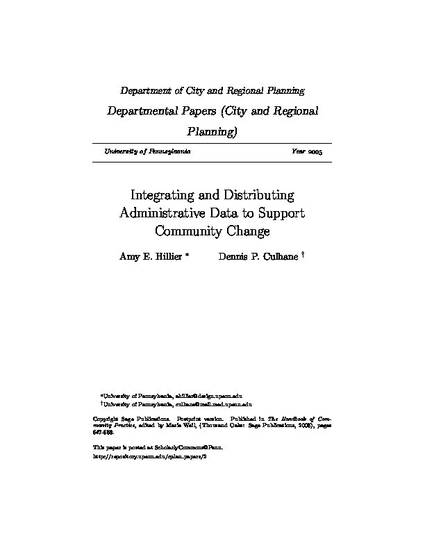
An increasing number of groups are demanding access to information about the physical, economic, and social conditions in their communities. In addition to researchers, community development corporations, neighborhood associations, social service agencies, and municipal agencies all are becoming consumers of quantitative data. More powerful desktop computers, sophisticated data management software, enormous data storage devices, and expanding Internet access have increased exponentially the capacity of even small organizations to handle large amounts of data. However, none of these advances guarantees that organization staff will be able to make sense of these mountains of data. Perhaps more important, the advances do not enhance access to the most useful types of data that frequently reside behind municipal agency firewalls and layers of bureaucratic red tape. The growing demand for small-area administrative data in useful formats makes essential the development of new tools to support a wide range of community change efforts.
Available at: http://works.bepress.com/dennis_culhane/9/
